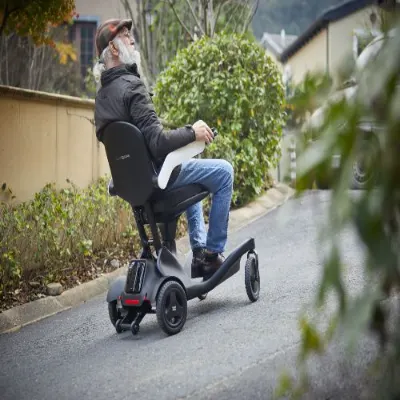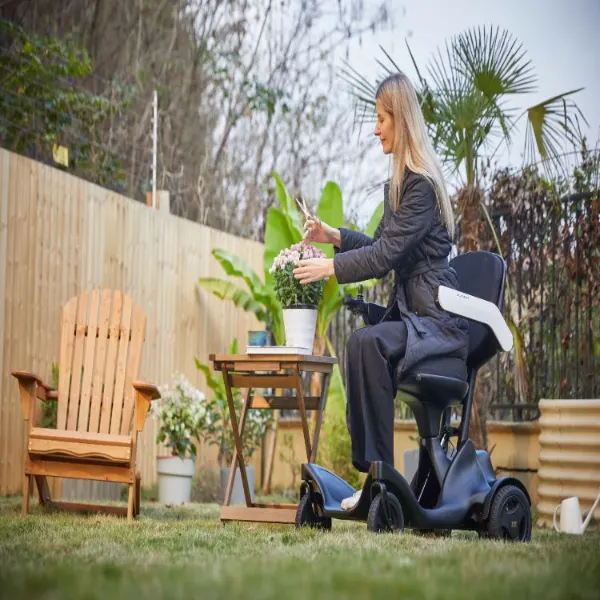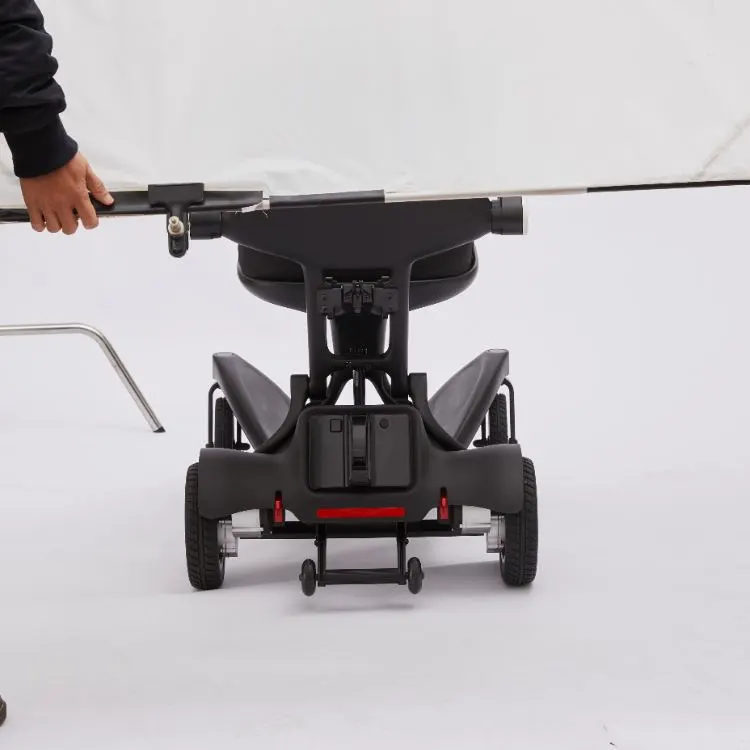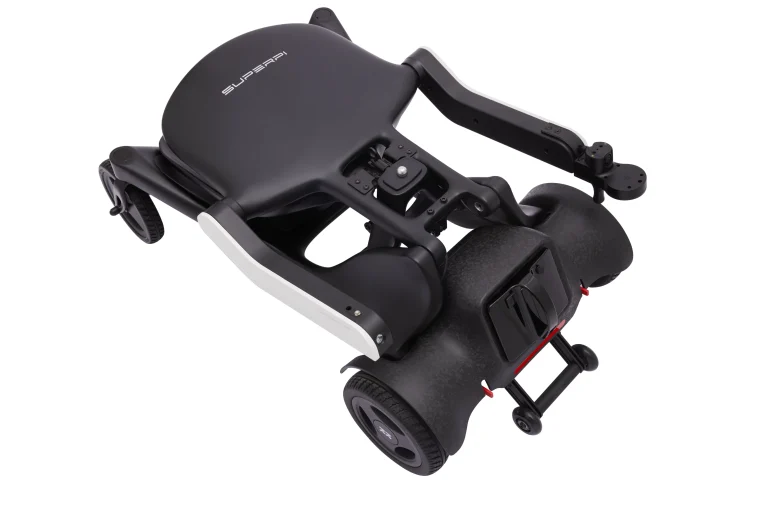
The benefits of mobility scooters extend beyond physical movement. They promote mental well-being by reducing feelings of isolation, fostering social connections, and enabling seniors to participate in activities they enjoy. Whether it’s a trip to the park, a visit to a local café, or simply moving around the house without strain, a mobility scooter can significantly enhance a senior’s quality of life. However, choosing the right scooter requires careful consideration of individual needs, lifestyle, and the environment in which the scooter will be used.This guide will cover everything you need to know, from assessing mobility needs to understanding scooter types, key features, safety considerations, and budgeting. We’ll also explore top brands, accessories, and tips for maintaining your scooter to ensure long-term reliability.
Step 1: Assessing Mobility NeedsBefore diving into the specifics of mobility scooters, it’s essential to evaluate the senior’s specific mobility needs. Not all scooters are suitable for every user, and understanding the individual’s requirements will help narrow down the options. Here are key questions to ask when assessing needs:
Where Will the Scooter Be Used Most Often?
- Indoor Use: If the scooter will primarily be used inside the home, a compact, three-wheel model with a tight turning radius is ideal for navigating narrow hallways and doorways. Measure doorways to ensure the scooter can fit—accounting for up to 2 inches of clearance loss with hinged doors.
- Outdoor Use: For outdoor activities like visiting parks or running errands, a four-wheel scooter with larger tires and higher ground clearance is better suited for uneven surfaces like sidewalks, grass, or gravel.
- Mixed Use: Many seniors need a scooter that can handle both indoor and outdoor environments. A versatile mid-size model with adjustable features may be the best fit.
How Often Will the Scooter Be Used?
- Daily Use: For frequent use, prioritize durability, comfort (e.g., padded seats, adjustable armrests), and a battery with a long range (up to 20–30 miles) to avoid frequent recharging.
- Occasional Use: If the scooter is for occasional outings, such as trips to the mall or doctor’s appointments, a lightweight, portable model that’s easy to disassemble or fold may suffice.
What Are the Physical Capabilities of the User?
- Manual Dexterity and Strength: Operating a mobility scooter requires the ability to steer using a tiller (handlebar) and control speed with hand controls. Seniors with limited hand strength or dexterity may benefit from scooters with delta tillers or simplified controls.
- Balance and Stability: Seniors with balance issues or conditions like Parkinson’s disease may need a four-wheel scooter for enhanced stability or additional safety features like anti-tip wheels.
- Weight and Height: Ensure the scooter’s weight capacity supports the user’s weight, including any items they may carry (e.g., groceries). Taller users may require scooters with more legroom, often found in three-wheel models.
What Are the Lifestyle Needs?
- Travel Requirements: If the senior travels frequently, a portable, foldable scooter that fits in a car trunk or is airline-approved is essential.
- Storage Space: Consider where the scooter will be stored at home or when not in use. Larger scooters may require a garage or outdoor storage with a weatherproof cover.
- Specific Activities: If the scooter will be used for specific tasks like shopping or carrying medical equipment (e.g., oxygen tanks), look for models with ample storage or accessory options.
By answering these questions thoroughly, you can create a clear picture of the type of scooter that will best meet the senior’s needs. Consulting with a healthcare professional, such as a doctor or occupational therapist, can also provide valuable insights into specific mobility requirements, especially for seniors with medical conditions like arthritis or multiple sclerosis.
Step 2: Understanding Types of Mobility ScootersMobility scooters come in various types, each designed for specific purposes and environments. The main categories are based on size, wheel configuration, and intended use. Here’s a breakdown of the primary types of mobility scooters available:
1. Travel/Portable Scooters
- Overview: Lightweight and compact, travel scooters are designed for easy transport, often disassembling into smaller pieces or folding like a suitcase. They typically weigh under 100 pounds, with the heaviest piece as light as 22 pounds.
- Best For: Seniors who travel frequently, need a scooter for short trips (e.g., to the mall or doctor’s office), or have limited storage space.
- Key Features:
- Weight capacity: Up to 250–300 pounds.
- Range: 10–15 miles per charge.
- Speed: Up to 4–5 miles per hour.
- Foldable or disassemblable frames for easy storage in car trunks.
- Smaller wheels for smooth surfaces like indoor floors or paved sidewalks.
- Pros:
- Easy to transport (some are airline-approved).
- Compact size for indoor use.
- Affordable, with prices starting around $800–$1,500.
- Easy to transport (some are airline-approved).
- Cons:
- Limited range and weight capacity compared to larger models.
- Less comfortable for long-term use due to smaller seats and minimal suspension.
- Not ideal for rough terrain.
- Example Models:
- Pride Go-Go Elite Traveller (compact, 3- or 4-wheel options, starting at ~$1,200).
- Zip’r Traveler (foldable, lightweight, up to 12 miles range).
- Pride Go-Go Elite Traveller (compact, 3- or 4-wheel options, starting at ~$1,200).
2. Mid-Size/Full-Size Scooters
- Overview: These scooters offer a balance of portability and durability, suitable for both indoor and outdoor use. They are sturdier than travel scooters and often feature enhanced comfort options like padded seats and adjustable tillers.
- Best For: Seniors who need a versatile scooter for daily use, such as running errands or visiting friends.
- Key Features:
- Weight capacity: Up to 350 pounds.
- Range: Up to 20 miles per charge.
- Speed: Up to 6–7 miles per hour.
- Larger wheels and moderate ground clearance for mixed terrains.
- Some models are road-legal (Class 3 in the UK, requiring DVLA registration).
- Pros:
- Versatile for indoor and outdoor use.
- More comfortable than travel scooters with better suspension and seating.
- Moderate price range ($1,400–$3,000).
- Cons:
- Less portable than travel scooters; some models may not disassemble easily.
- Larger turning radius may limit indoor maneuverability.
- Example Models:
- Pride Victory 10 (4-wheel, 7 mph, 18-mile range).
- Merits Pioneer 1 (3-wheel, budget-friendly, starting at ~$1,500).
- Pride Victory 10 (4-wheel, 7 mph, 18-mile range).
3. Heavy-Duty/All-Terrain Scooters
- Overview: Built for rugged outdoor use, heavy-duty scooters feature powerful motors, large batteries, and all-terrain tires. They are ideal for seniors who need to navigate uneven surfaces or travel long distances.
- Best For: Active seniors living in suburban or rural areas with uneven terrain (e.g., grass, gravel, or hills).
- Key Features:
- Weight capacity: Up to 400–500 pounds.
- Range: Up to 30 miles per charge.
- Speed: Up to 8–11.5 miles per hour.
- High ground clearance and robust suspension for rough terrain.
- Often equipped with advanced features like orthopedic seats or canopies.
- Pros:
- Exceptional stability and durability for outdoor use.
- Comfortable for long-term use with larger seats and better suspension.
- High weight capacity for larger users or carrying heavy items.
- Cons:
- Expensive, with prices ranging from $2,000 to $7,000.
- Bulky and difficult to transport without a vehicle lift.
- Not suitable for indoor use due to large turning radius.
- Expensive, with prices ranging from $2,000 to $7,000.
- Example Models:
- Afikim Afiscooter S4 (all-terrain, up to 28-mile range, ~$5,000–$7,000).
- Heartway S12X Vita Monster (all-terrain, 11.5 mph, ~$5,100).
- Afikim Afiscooter S4 (all-terrain, up to 28-mile range, ~$5,000–$7,000).
4. Three-Wheel vs. Four-Wheel Scooters
- Three-Wheel Scooters:
- Pros: Tighter turning radius (ideal for indoor use), more legroom, lighter weight.
- Cons: Less stable on uneven terrain, lower weight capacity.
- Best For: Indoor use or smooth outdoor surfaces like paved sidewalks.
- Pros: Tighter turning radius (ideal for indoor use), more legroom, lighter weight.
- Four-Wheel Scooters:
- Pros: Greater stability, higher weight capacity, better for outdoor use.
- Cons: Wider turning radius, heavier, less maneuverable indoors.
- Best For: Outdoor use or users needing extra stability.
- Pros: Greater stability, higher weight capacity, better for outdoor use.
Choosing the Right TypeThe choice between these types depends on the senior’s primary needs. For example, a senior living in a small apartment who occasionally visits the mall might prefer a travel scooter like the Pride Go-Go Ultra X for its portability and maneuverability. Conversely, an active senior in a rural area might opt for a heavy-duty model like the Afikim S4 for its all-terrain capabilities. If the scooter will be used in varied environments, a mid-size model like the Pride Victory 10 offers a good balance.
Step 3: Key Features to ConsiderOnce you’ve identified the type of scooter that suits the senior’s needs, it’s time to dive into the specific features that will ensure comfort, safety, and functionality. Here are the critical features to evaluate:
1. Comfort
- Seat: Look for padded, adjustable seats with ample support. Captain’s chairs or orthopedic seats are ideal for long-term use, while swivel seats make getting on and off easier.
- Legroom and Footrest: Ensure the footrest is wide enough and the seat height allows the user’s feet to rest flat with knees at a 90-degree angle. Three-wheel scooters typically offer more legroom.
- Tiller Adjustability: An adjustable tiller (handlebar) ensures the user can reach the controls comfortably without straining.
2. Portability
- Weight and Disassembly: For travel, choose a scooter that disassembles into lightweight pieces (e.g., 22–52 pounds per piece) or folds compactly. Models like the LiteRider or Zip’r Roo are designed for easy transport.
- Хранилище: Ensure the scooter fits in the user’s home or vehicle. For larger scooters, consider outdoor storage with a weatherproof cover.
3. Battery Life and Range
- Range: Battery range varies from 10 miles (travel scooters) to 30 miles (heavy-duty scooters). Choose a model that matches the user’s typical travel distance.
- Тип батареи: Most scooters use sealed lead-acid (SLA) batteries, which are airline-safe. Lithium-ion batteries offer longer life (up to 7,000 charges) but may have travel restrictions and require specific chargers.
- Charging: Check if the battery can be removed for indoor charging or if an outdoor charging point is needed.
4. Motor and Speed
- Моторная мощность: Smaller scooters have motors of 200–350 watts, while heavy-duty models can reach 700 watts for tackling inclines and heavier loads.
- Speed: Most scooters range from 3–8 mph, with heavy-duty models reaching up to 11.5 mph. Ensure the speed suits the user’s needs and local regulations (e.g., 4 mph for pavement-only scooters).
- Outdoor Use: Four-wheel scooters with larger tires and higher ground clearance are better for uneven terrain like grass or gravel.
How Often Will the Scooter Be Used?
- Daily Use: For frequent use, prioritize comfort (e.g., padded seats, adjustable armrests) and a battery with a long range (15–30 miles) to avoid frequent recharging.
- Occasional Use: If used occasionally, a lightweight, portable model may suffice.
What Are the Physical Capabilities of the User?
- Manual Dexterity: Operating a scooter requires steering with a tiller and using hand controls. Seniors with limited dexterity may benefit from delta tillers or simplified controls.
- Balance and Stability: Four-wheel scooters are more stable for users with balance issues, while three-wheel models are better for maneuverability in tight spaces.
- Weight and Height: Ensure the scooter’s weight capacity (typically 250–500 pounds) supports the user and any cargo. Taller users may need more legroom, often found in three-wheel scooters.
What Are the Lifestyle Needs?
- Путешествовать: For frequent travelers, a foldable or disassemblable scooter that’s airline-approved is essential.
- Хранилище: Consider where the scooter will be stored. Compact models fit in small apartments, while larger scooters may require a garage or outdoor storage with a cover.
- Activities: If the scooter is for specific tasks like shopping or carrying medical equipment, look for models with storage options (e.g., baskets, under-seat compartments).
Consulting a healthcare professional can help clarify specific needs, especially for seniors with conditions like arthritis or Parkinson’s disease.
Step 2: Types of Mobility ScootersMobility scooters come in various types, each suited for specific environments and needs. Here’s an overview of the main categories:
1. Travel/Portable Scooters
- Best For: Seniors who travel often or need a scooter for short trips (e.g., to the mall or doctor’s appointments).
- Features:
- Lightweight (under 100 pounds, with pieces as light as 22 pounds).
- Foldable or disassemblable for easy transport in car trunks.
- Range: 10–15 miles.
- Speed: 4–5 mph.
- Smaller wheels for smooth surfaces.
- Pros: Portable, affordable ($800–$1,500), airline-safe batteries.
- Cons: Limited range, less comfortable for long-term use, not suitable for rough terrain.
- Examples: Pride Go-Go Ultra X, Zip’r Roo.
2. Mid-Size/Full-Size Scooters
- Best For: Seniors needing a versatile scooter for daily use, both indoors and outdoors.
- Features:
- Weight capacity: Up to 350 pounds.
- Range: Up to 20 miles.
- Speed: 6–7 mph.
- Larger wheels for mixed terrains.
- Some models are road-legal (Class 3 in the UK).
- Pros: Balances portability and durability, comfortable for longer use.
- Cons: Less portable than travel scooters, larger turning radius.
- Examples: Pride Victory 10, Merits Pioneer 1.
3. Heavy-Duty/All-Terrain Scooters
- Best For: Active seniors navigating uneven terrain (e.g., grass, gravel) or long distances.
- Features:
- Weight capacity: Up to 500 pounds.
- Range: Up to 30 miles.
- Speed: Up to 8–11.5 mph.
- High ground clearance, robust suspension, all-terrain tires.
- Pros: Excellent stability, comfortable for extended use.
- Cons: Expensive ($2,000–$7,000), bulky, not ideal for indoor use.
- Examples: Afikim Afiscooter S4, Heartway S12X Vita Monster.
4. Three-Wheel vs. Four-Wheel Scooters
- Three-Wheel:
- Pros: Tighter turning radius, more legroom, lighter.
- Cons: Less stable on uneven terrain.
- Best For: Indoor use or smooth surfaces.
- Four-Wheel:
- Pros: Greater stability, higher weight capacity.
- Cons: Wider turning radius, heavier.
- Best For: Outdoor use or users needing stability.
Step 3: Key Features to EvaluateWhen choosing a mobility scooter, focus on features that enhance comfort, safety, and functionality. Here are the critical factors to consider:
1. Comfort
- Seat: Look for padded, adjustable seats with backrests. Swivel seats ease transfers, while captain’s chairs offer maximum comfort.
- Legroom: Ensure adequate legroom and a footrest that allows a 90-degree knee bend. Three-wheel scooters often provide more legroom.
- Tiller: Adjustable tillers ensure ergonomic control. Delta tillers are ideal for limited dexterity.
2. Portability
- Disassembly/Folding: Travel scooters disassemble into lightweight pieces or fold compactly. Check the weight of the heaviest piece (e.g., 22–52 pounds).
- Хранилище: Compact scooters fit in apartments; larger models may need outdoor storage with a cover.
3. Battery and Range
- Range: Choose a battery range that matches daily travel needs (10–30 miles).
- Тип батареи: Sealed lead-acid batteries are standard and airline-safe. Lithium-ion batteries last longer but may have travel restrictions.
- Charging: Removable batteries simplify indoor charging.
4. Motor and Speed
- Motor: Smaller scooters have 200–350-watt motors; heavy-duty models have up to 700 watts for inclines and heavier loads.
- Speed: Ranges from 3–8 mph, with some models reaching 11.5 mph. Ensure compliance with local speed limits (e.g., 4 mph for pavement-only scooters).
5. Safety Features
- Противополовые колеса: Prevent tipping on uneven terrain, especially on three-wheel scooters.
- Lights and Reflectors: Headlights, taillights, and reflectors enhance visibility.
- Тормоза: Automatic brakes engage when the throttle is released. Ensure reliable braking systems.
- Stability: Four-wheel scooters and low-center-of-gravity designs improve stability.
6. Storage and Accessories
- Хранилище: Baskets, under-seat compartments, or locking storage for groceries or personal items.
- Accessories: Options like cane holders, cup holders, oxygen tank holders, or weather canopies enhance functionality.
Step 4: Safety and Legal ConsiderationsSafety is paramount when choosing a mobility scooter, especially for seniors who may have impaired vision, hearing, or reaction times. Additionally, understanding local regulations ensures legal and safe operation.Safety Features to Prioritize
- Противополовые колеса: Essential for three-wheel scooters to prevent tipping on inclines or uneven surfaces.
- Lighting: Headlights, taillights, and turn signals improve visibility, especially for evening use.
- Тормоза: Ensure the scooter has reliable automatic brakes that engage when the throttle is released.
- Seat Belts: Some models include seat belts for added security, especially on high-speed scooters.
- GPS Alarms: For added safety, consider scooters with GPS alarms that allow users to call for help in emergencies.
Legal Considerations
- No License Required: In most regions, including the U.S., no driver’s license is needed for mobility scooters. However, road-legal scooters (e.g., Class 3 in the UK, with speeds up to 8 mph) may require registration with local authorities like the DVLA.
- Medicare Coverage: In the U.S., Medicare Part B may cover mobility scooters if deemed medically necessary (e.g., for in-home use). A prescription and Certificate of Medical Necessity (CMN) from a healthcare provider are required.
- Local Regulations: Check local laws for speed limits (e.g., 4 mph on pavements in the UK) and where scooters can be used (e.g., sidewalks vs. roads).
Training and Test Drives
- Training: Some users benefit from training to operate the scooter safely, especially if they’re new to mobility aids. Training is often recommended but not always provided.
- Test Drives: Visit a local dealer to test-drive models. This ensures the scooter feels comfortable and suits the user’s needs.
Step 5: Budgeting and FinancingMobility scooters vary widely in price, from $800 for basic travel models to over $7,000 for premium all-terrain scooters. Ascertain the cost of a mobility scooter before purchasing. Here are some tips for budgeting and financing options:Price Ranges
- Travel Scooters: $800–$1,500.
- Mid-Size Scooters: $1,400–$3,000.
- Heavy-Duty Scooters: $2,000–$7,000.
Financing Options
- Medicare/Medicaid: May cover scooters if medically necessary. Contact a Medicare provider for details.
- Private Insurance: Some plans cover mobility scooters with a prescription.
- Retailer Financing: Many retailers like Zip’r or Senior.com offer financing plans or price-match guarantees.
- Leasing/Rental: For short-term needs, renting from providers like Scootz Mobility Scooter Rentals in Orlando can be cost-effective.
Cost-Saving Tips
- Buy Reconditioned: Used or reconditioned scooters can be more affordable but check for warranty and condition.
- Look for Discounts: Some retailers offer discounts or free shipping.
- Avoid Overbuying: Don’t purchase a heavy-duty scooter if a travel model meets your needs, as this can save thousands.
Step 6: Top Mobility Scooter BrandsChoosing a reputable brand ensures quality, reliability, and good customer support. Here are three top brands based on market reputation and user reviews:
1. Pride Mobility
- Overview: A leading brand offering a wide range of scooters, from compact travel models (Go-Go series) to heavy-duty options (Victory series).
- Pros: Affordable (starting at ~$1,200), reliable, customizable features (e.g., interchangeable controls for left- or right-handed users).
- Popular Models: Go-Go Elite Traveller, Victory 10, Travel Pro Premium.
2. Golden Technologies
- Overview: Known for comfort and durability, Golden offers scooters like the LiteRider and heavy-duty models with all-terrain capabilities.
- Pros: High-quality craftsmanship, one-year in-home service warranty, suitable for both indoor and outdoor use.
- Popular Models: LiteRider, Buzzaround EX.
3. Drive Medical
- Overview: Specializes in compact, budget-friendly scooters like the Spitfire and Scout, ideal for in-home or short trips.
- Pros: Affordable ($800–$2,000), reliable, highly rated by consumers.
- Popular Models: Spitfire, Scout.
Step 7: Maintenance and CareTo ensure your mobility scooter remains reliable, regular maintenance is essential. Here are key tips:
- Уход за батареей: Charge nightly, avoid over-discharging, and store batteries above 32°F (0°C) for lithium-ion models. Replace batteries every 1–2 years for SLA or 5–10 years for lithium-ion.
- Tire Maintenance: Check for wear and replace tires as needed, especially for outdoor scooters.
- Cleaning: Wipe down the scooter to prevent dust buildup, and use a weatherproof cover for outdoor storage.
- Regular Inspections: Check brakes, controls, and frame for wear. Schedule annual servicing with the retailer or manufacturer.
- Warranty: Choose scooters with a full manufacturer’s warranty (e.g., Zip’r, Pride) for peace of mind.
Step 8: Accessories and CustomizationAccessories can enhance the scooter’s functionality and user experience. Common options include:
- Хранилище: Front/rear baskets, under-seat compartments, or locking storage.
- Comfort: Upgraded seats, armrests, or canopies for weather protection.
- Safety: Rearview mirrors, cane/crutches holders, GPS alarms.
- Convenience: Cup holders, oxygen tank holders, USB charging ports.
Step 9: Making the Final DecisionTo choose the right mobility scooter:
- Test Drive: Visit a local dealer (e.g., All-Star Medical, United Access) to try different models.
- Compare Brands: Review Pride, Golden, and Drive Medical for quality and features.
- Check Reviews: Look at user reviews for reliability and comfort insights.
- Consult Experts: Speak with mobility specialists or healthcare professionals for personalized recommendations.
- Consider Budget: Balance cost with needs, exploring financing or rental options if needed.
ЗаключениеChoosing the right mobility scooter for a senior is a life-changing decision that can restore independence, enhance social engagement, and improve overall well-being. By assessing individual needs, understanding scooter types, prioritizing comfort and safety features, and considering budget and maintenance, you can find a scooter that perfectly suits the user’s lifestyle. Whether it’s a compact travel scooter like the Pride Go-Go Ultra X for occasional outings or a heavy-duty Afikim Afiscooter S4 for all-terrain adventures, the right choice will empower seniors to live life to the fullest.For further assistance, contact reputable retailers like Zip’r Mobility, United Access, or Scootz Mobility Scooter Rentals, or consult a healthcare professional to ensure the scooter meets specific medical needs. With the right mobility scooter, seniors can reclaim their freedom and enjoy a more active, fulfilling life.






